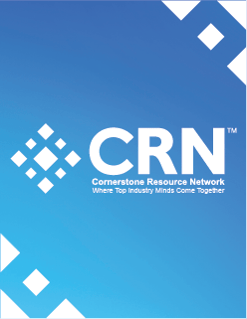
Welcome to the sleepy world of core banking systems. Nothing to see here folks—just keep on walking.
The banking industry has become accustomed to baby steps in core systems development, with a truly new product rolling out only once every few years. And when it comes to adoption of new technology, progress is measured in dog years. However, a new era of core systems competition is about to begin, with almost everything on the table for change. Given the fierce pressure for banks to become tech-driven companies, perhaps we have reached a tipping point. Consider these recent vendor activities:
- FIS partnered with Zenmonics and is standing down on development of its digital solutions. Rebranded as Digital One, it is being positioned as a game-changer to solve the digital needs of hundreds of banks. All FIS cores will eventually be integrated to it. At the same time, FIS is developing its core of the future based on its Profile Core. Bankers who drink the Kool-Aid will be switched to a new digital system and eventually a new core through a “mass enablement” button. Some would say it happens “automagically.” Cool vision, for sure, but bankers have become wary of promises and will demand execution.
- Fiserv bought OBS for Cash Management and Architect for Consumer Online Banking and then merged with First Data for card services. Talk about an overhaul of customer-facing channels. All Fiserv Core customers will be courted to migrate to theses platforms. Given the tepid solutions Fiserv previously offered, customers are lining up and project queues are growing. These were smart product moves and now the proof comes in delivering truly integrated solutions.
- Jack Henry acquired Banno for Consumer Online Banking and developed the new JHA Treasury Management platform in house. It also inked a 10-year deal with PSCU for card services. Jack is working hard to stay with the times. The core system is solid and now hundreds of clients will get converted to these new platforms. The lines have formed and the conversions are happening. Cornerstone hopes this momentum continues and these product offerings mature effectively.
- The Sanchez team is at it again and working with Live Oak to develop the new FinXact core, which will be integrated with the Apiture digital suite. The American Bankers Association is giving voice and support to the disruption. Along with funding by Live Oak, this deal has strong talent and lots of supporters. Bankers need to be patient, however, and understand how long it takes to evolve and iterate a complex, feature-rich banking system.
- Coming out of their initial U.S. deployments, international players Temenos and Tata have some targets lined up that are more mainstream than the large bank and digital bank deployments thus far. So a banker can finally see some due diligence, get a handle on what it would cost to move to these core systems, and pass muster on regulatory compliance. Having new players in town is good.
Core is now table talk in the mid-size banking space. The days of one-stop shopping by banks appear to be dissipating, and CIOs now view their payments, digital, lending, CRM and analytics vendors as critical as the core. If we are lucky, technology costs will move from a tax on the organization to more of an investment in competitiveness to take on the big boys.
Despite the strategic urgency of technology in banking, the majority of bank executives are not using their economic power to help drive positive industry change. A recent Cornerstone survey revealed that 65% of banks and credit unions auto-renew their contracts without giving much (if any) consideration to goings-on in Vendor World. That 65% will eventually get a knock at the door from one or more of the aforementioned vendors. Bank executives are going to be exposed to other options, even if from their own vendors.
So, is change really afoot? We think so, but it’s likely to occur at the snail’s pace typically associated with banking technology. The reasons for this are deeply embedded within our industry, but if real change is to occur, some issues need to be addressed:
- Few of the vendors (and we work with more than 50) will announce the retirement of a product. In a heavily regulated environment, a good percentage of R&D has to go to just keeping a solution compliant. Keeping old systems alive is a tax on progress, maybe as much as 30% on possible R&D. For a group that espouses economy of scale, it’s amazing they continue to hold on to so many antiquated core and ancillary systems still requiring development that could be better invested elsewhere.
- If one or more new entrants into the core marketplace are wildly successful, our industry does not have the professional services that would be needed to move 500 to 1,000 banks to a new core product. The vendors are having difficulty getting enough qualified people, ramping them up and deploying them to install the changes required by a core move. If it were even possible, it would take years, possibly a decade to move all of the banks to the latest and greatest technology. This bandwidth to drive migrations and implementations is one of the greatest operational risks facing the banking industry.
- Vendors buy their technology instead of developing it (with limited exceptions). They leave the development to the startups and then snatch them up when they get viable. This means the integration comes afterwards, which is much tougher, and then the acquiring vendors have to learn the systems and scale deployment resources. We’ve heard from so many institutions that bought one of the newer systems from the “Big 3” where the implementation went sideways because only a handful of people at the vendor’s shop knew the product. And the plethora of point solutions being used means new integration needs to be created time and time again.
- Every core vendor is now coming up with an integration strategy. We applaud the fact that they are now committed to open application programming interfaces, middleware, etc. Here at Cornerstone, we live life in the trenches. We know it’s one thing for an institution to build an API to its own core. It’s quite another thing to partner with a competitor and build out its side of the API. Because all of the major players are reluctant to work together, we anticipate the integration strategy will come together much later than what is being advertised. New players like investment fund Canapi Ventures hope to drive a common integration architecture among an ecosystem of players. Driving more standards across a competitive vendor market would be welcomed by bank executives.
- Contracts for cores are typically five years or longer. With an average 2.5 years of term left in the average bank’s contract and a need to start looking for a new solution three years in advance, many institutions are going to miss the window of opportunity and have to wait five more years to renew. Combine this with vendor lead times of 18 months or longer, and what should take three years takes five or more. How can FIs plan for this? Who knows what the product will look like in five years?
So yes, the times they are a-changin’. Finally—and for the better. Bankers will be seeing many more choices to be competitive in the foreseeable future than they have in the past three decades. But only the most nimble banks that get on the early train will be doing it with any sort of speed. The rest? Get in line, folks. It could be a long one.
We believe the industry will be making progress faster than in the past, simply because the vendors are now seeing a path forward. But it’s a long path. In the meantime, there will be a lot of cheese moved, and resource constraints on both the vendor and bank side will often define the critical path. Now is the time for financial institutions to get the flexibility in their contracts that will enable them to take advantage of what’s to come.
5 min read
The Holy Quest for CRM in Anytown, USA
Apr 25, 2024by Elizabeth Gujral
7 min read
Where Does Chime Go From Here?
Apr 4, 2024by Ron Shevlin

.png?width=1000&height=250&name=Cornerstone_Advisors_Logo-removebg-preview%20(1).png)



-2.png?width=247&height=320&name=MicrosoftTeams-image%20(36)-2.png)
-2.png?width=247&height=320&name=MicrosoftTeams-image%20(35)-2.png)